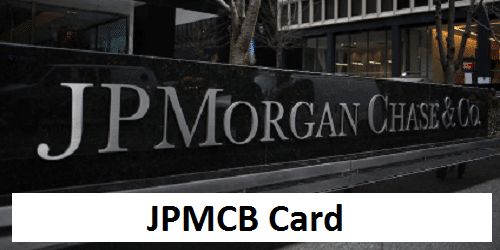Taking on debt can unlock many opportunities. But having a lot of debt can indicate financial stress. So how much credit card debt is too much?
The answer depends on your financial situation. And while there is no magic number, there are some formulas that will help you understand how lenders view your debt. By considering your income, lifestyle, and total available credit, you can decide how much credit card debt you’re comfortable with.
6 Signs You Have Too Much Credit Card Debt
Credit card debt isn’t always a bad thing. It can help you spread payments, manage cash flow, and earn cash back or rewards points. If chosen wisely and used judiciously, credit cards can bolster your creditworthiness by building a long and reliable payment history.
But credit cards are revolving debts, meaning you’re constantly in a cycle of paying off and then adding again. Along with the high-interest rate (compared to other types of loans), this type of debt has a habit of sliding off you.
Here are six indicators that you have too much credit card debt:
You have problems with payment
You may have too much credit card debt if you are having trouble making more than the minimum payments. The minimum monthly payments for most credit cards only cover interest, fees, and a fraction of your actual balance. If you stop paying, your balance grows and can become difficult to pay.
Using one credit card to pay off others is another sign that you have too much credit card debt. Moving your debt this way won’t solve the problem and could cost you more in the long run.
Evaluating your credit card debt is a healthy part of financial wellness.
Your cards are used up
If you regularly reach your credit limit on your credit cards, it could indicate a problem. Having a high balance could indicate that you are overspending and that will negatively impact your credit score.
You have high card payments
An easy way to assess your credit card debt is to compare it with your other bills. If your total payments on all your credit cards are close to what you pay for nondiscretionary expenses like your rent, mortgage, or car loans, then you probably have too much credit card debt.
Your credit utilization ratio is high
Credit usage is a way of measuring how much of your available credit you are using. Anything above 30% credit utilization is considered high and will hurt your credit score, and that applies to your debt per card as well as your total debt.
Lower use of credit is more favorable. Credit utilization is the second most important factor affecting your credit score. It shows that you are managing your credit wisely without relying on it to get ahead.
Credit utilization is the second most important factor affecting your credit score.
How to calculate credit usage
To find your credit usage, add up the total amount you owe on your credit cards and divide that number by your credit limit.
For example, if you have three credit cards and each has a credit line of $3,000, your total available credit is $9,000. Suppose you owe the following:
- $500 on card A
- $500 on card B
- $1,000 on card C
Their combined total debt is $2,000. If we divide it by your available credit, we get 0.22, which means you’re using a little less than a quarter of your available credit.
Combined Total Debt / Available Credit = Credit Utilization
Ideally, the credit usage on cards A, B, and C will be less than 30% per card and the total credit usage will also be less than 30%. In the example above, your total credit utilization is good at 22%, but card C is just above 30%. That’s the balance you want to focus on first.
Has a high debt-to-income ratio
Your debt-to-income ratio is another way to put your credit card debt into context. This ratio compares your total monthly expenses to your monthly income before taxes. To calculate it, add up all your monthly bills as:
- Rent or mortgage
- Car loans
- Student grants
- Credit cards
Any other debt you have
A lower debt-to-income ratio tells lenders that you’re more likely to pay back what you’ve borrowed. Debt-to-income ratios of 35% or less are considered good.
You may have too much credit card debt if you are having trouble making more than the minimum payments.
How to Calculate the Debt-to-Income Ratio?
Let’s say you are calculating your debt-to-income ratio. Your monthly pre-tax income is $5,000 and you have the following monthly expenses:
- Mortgage: $1,200
- Car Loan: $500
- Credit Cards: $300
Her total monthly expenses are $2,000. Divide that by your monthly gross income and you get a debt-to-income ratio of 40%.
To better manage your debt, request a transfer from the credit card balance to a card with a lower interest rate.
Debt-to-income ratio limits
One drawback to the debt-to-income ratio is that it represents your total debt rather than just your credit card debt. Many financial experts agree that some debt is “healthier” than credit card debt. For example, your mortgage or student loan:
- Don’t charge the same interest like a credit card
- They are paid in a certain number of installments
- Less chance of getting out of hand
- Your Federal Income Taxes May Be Partially Cancelled
While the debt-to-income ratio remains a useful tool for assessing your finances, you can get a better idea of how your credit card debt is affecting you by combining it with other assessment tools.
Credit card payments cannot exceed 10% of your net income.
Credit card debt ratio
An easier way to assess your credit card debt is through your credit card debt ratio. This ratio looks at how much after-tax income you have each month to cover your credit card debt. If your credit card minimum payments are too high, you will have a hard time covering your other expenses. Credit card payments cannot exceed 10% of your net income.
Imagine your monthly net income is $4,000 and you have the following minimum payments on credit cards:
- $75 on card A
- $120 on card B
- $50 on card C
That gives you a total minimum credit card debt of $245 per month. Dividing by your net monthly income shows that you have a credit card debt ratio of 6%.
How Much Credit Card Debt Does the Average American Have?
According to a recent Experian survey, the average American has a credit card balance of $5,315. That’s not an easy sum for most people to pay off quickly, meaning most Americans keep their balance for a while.
An alternative is a personal line of credit. It is known as a PLOC and is similar to a credit card in that it is a revolving line of credit, but a PLOC is only available for a certain period and usually has a lower interest rate. You get money out of it by writing checks instead of swiping a card.
A typical PLOC is available between six months and five years and offers a line of credit between $1,000 and $100,000. Most have a monthly payment schedule.
PLOCs are ideal for small home renovations, medical expenses, or refinancing loans. Some borrowers also use them to reconsolidate credit card debt.
Personal lines of credit are great for small home remodeling, medical expenses, or loan refinancing.
How to deal with too much credit card debt?
The first step is to assess the problem. If you’re spending too much money, it’s time to create a budget and stick to it. This may mean cutting unnecessary expenses or scheduling your monthly bills to avoid expensive late fees.
It is also important to pay more than the minimum monthly amount. If you’ve only paid the minimums, you’ll need to adjust your spending to increase your monthly payments. Otherwise, you will just float in the water and not move forward.
Many financial experts agree that some debt is “healthier” than credit card debt.
For many people with a lot of credit card debt, the monthly payments are simply too high to pay off the principal. If this sounds familiar to you, there are a few things you can try to make payments more manageable:
- Look for extra income, such as a part-time job.
- Call your credit card issuer and ask for a lower interest rate
- Request a transfer from the credit card balance to a card with a lower interest rate or an introductory rate of 0%
- Consolidate your credit card debt with a type of personal loan called a debt consolidation loan.
What to do if you have too much debt?
Not having the money to pay your bills and balances can be scary. But there are steps you can take to help you start reducing debt.
Being organized
- Hit the reset button on your budget. Get a complete picture of your finances and where your money is going. This can help you determine which debts you want to work on first.
- Know your credit score and the debt-to-income ratio. Get a copy of your credit report and calculate your DTI so you know where you stand.
- Understand the difference between debt that can help you and debt that won’t. Any debt that doesn’t add value later in life (such as a student loan or mortgage) is a debt that you want to prioritize paying off sooner.
- Discover credit advice as a way to learn about money and get expert advice on managing credit card debt.
- Try to get to the roots of your financial stress. Dealing with financial stress won’t make your debt go away, but it can give you closure and possibly the confidence to move on.
Find a Debt Payment Strategy You Can Commit to
There are many options when it comes to figuring out how to pay off your debts. Some of the ways to manage debt are:
- The debt snowball method
- The debt avalanche method
- Consolidate high-interest debt with a personal loan
Conclusion – How Much Credit Card Debt Is Too Much?
Evaluating your credit card debt is a healthy part of financial wellness. By examining your credit card debt alongside your other finances, you can learn how to use your credit more effectively, reduce costs, and develop debt repayment strategies to build a brighter financial future.






